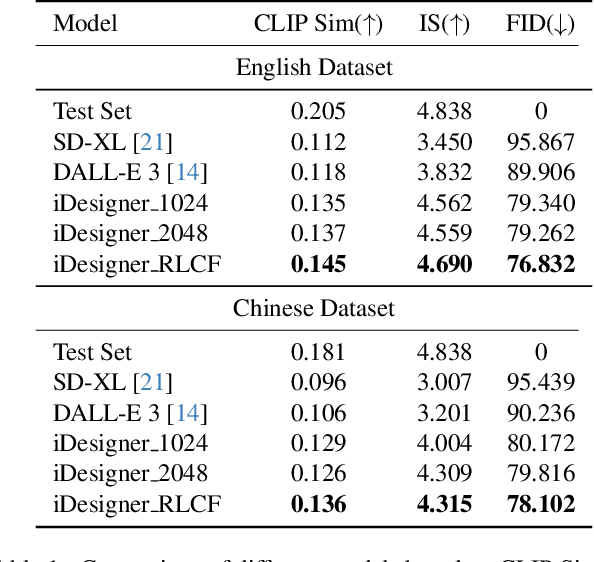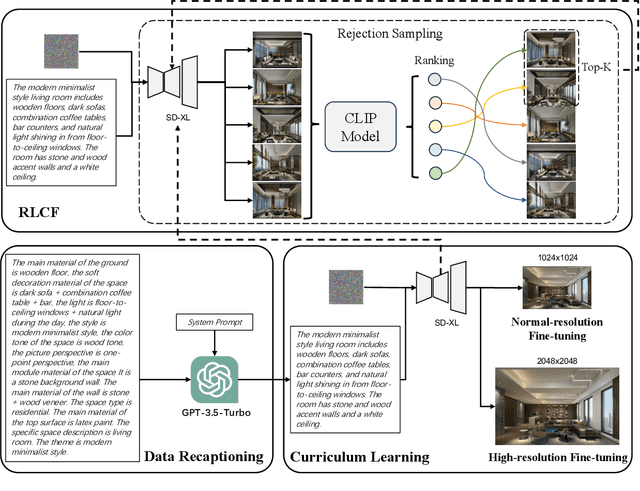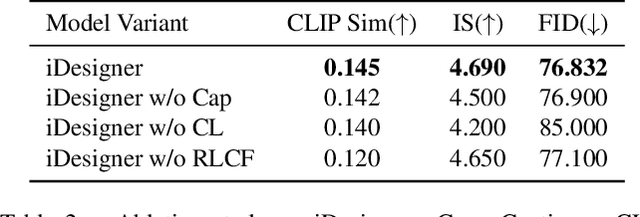Yuanhe Tian
Recurrent Visual Feature Extraction and Stereo Attentions for CT Report Generation
Jun 24, 2025Abstract:Generating reports for computed tomography (CT) images is a challenging task, while similar to existing studies for medical image report generation, yet has its unique characteristics, such as spatial encoding of multiple images, alignment between image volume and texts, etc. Existing solutions typically use general 2D or 3D image processing techniques to extract features from a CT volume, where they firstly compress the volume and then divide the compressed CT slices into patches for visual encoding. These approaches do not explicitly account for the transformations among CT slices, nor do they effectively integrate multi-level image features, particularly those containing specific organ lesions, to instruct CT report generation (CTRG). In considering the strong correlation among consecutive slices in CT scans, in this paper, we propose a large language model (LLM) based CTRG method with recurrent visual feature extraction and stereo attentions for hierarchical feature modeling. Specifically, we use a vision Transformer to recurrently process each slice in a CT volume, and employ a set of attentions over the encoded slices from different perspectives to selectively obtain important visual information and align them with textual features, so as to better instruct an LLM for CTRG. Experiment results and further analysis on the benchmark M3D-Cap dataset show that our method outperforms strong baseline models and achieves state-of-the-art results, demonstrating its validity and effectiveness.
Large Language Models Enhanced by Plug and Play Syntactic Knowledge for Aspect-based Sentiment Analysis
Jun 15, 2025Abstract:Aspect-based sentiment analysis (ABSA) generally requires a deep understanding of the contextual information, including the words associated with the aspect terms and their syntactic dependencies. Most existing studies employ advanced encoders (e.g., pre-trained models) to capture such context, especially large language models (LLMs). However, training these encoders is resource-intensive, and in many cases, the available data is insufficient for necessary fine-tuning. Therefore it is challenging for learning LLMs within such restricted environments and computation efficiency requirement. As a result, it motivates the exploration of plug-and-play methods that adapt LLMs to ABSA with minimal effort. In this paper, we propose an approach that integrates extendable components capable of incorporating various types of syntactic knowledge, such as constituent syntax, word dependencies, and combinatory categorial grammar (CCG). Specifically, we propose a memory module that records syntactic information and is incorporated into LLMs to instruct the prediction of sentiment polarities. Importantly, this encoder acts as a versatile, detachable plugin that is trained independently of the LLM. We conduct experiments on benchmark datasets, which show that our approach outperforms strong baselines and previous approaches, thus demonstrates its effectiveness.
Representation Decomposition for Learning Similarity and Contrastness Across Modalities for Affective Computing
Jun 08, 2025Abstract:Multi-modal affective computing aims to automatically recognize and interpret human attitudes from diverse data sources such as images and text, thereby enhancing human-computer interaction and emotion understanding. Existing approaches typically rely on unimodal analysis or straightforward fusion of cross-modal information that fail to capture complex and conflicting evidence presented across different modalities. In this paper, we propose a novel LLM-based approach for affective computing that explicitly deconstructs visual and textual representations into shared (modality-invariant) and modality-specific components. Specifically, our approach firstly encodes and aligns input modalities using pre-trained multi-modal encoders, then employs a representation decomposition framework to separate common emotional content from unique cues, and finally integrates these decomposed signals via an attention mechanism to form a dynamic soft prompt for a multi-modal LLM. Extensive experiments on three representative tasks for affective computing, namely, multi-modal aspect-based sentiment analysis, multi-modal emotion analysis, and hateful meme detection, demonstrate the effectiveness of our approach, which consistently outperforms strong baselines and state-of-the-art models.
DNAZEN: Enhanced Gene Sequence Representations via Mixed Granularities of Coding Units
May 04, 2025Abstract:Genome modeling conventionally treats gene sequence as a language, reflecting its structured motifs and long-range dependencies analogous to linguistic units and organization principles such as words and syntax. Recent studies utilize advanced neural networks, ranging from convolutional and recurrent models to Transformer-based models, to capture contextual information of gene sequence, with the primary goal of obtaining effective gene sequence representations and thus enhance the models' understanding of various running gene samples. However, these approaches often directly apply language modeling techniques to gene sequences and do not fully consider the intrinsic information organization in them, where they do not consider how units at different granularities contribute to representation. In this paper, we propose DNAZEN, an enhanced genomic representation framework designed to learn from various granularities in gene sequences, including small polymers and G-grams that are combinations of several contiguous polymers. Specifically, we extract the G-grams from large-scale genomic corpora through an unsupervised approach to construct the G-gram vocabulary, which is used to provide G-grams in the learning process of DNA sequences through dynamically matching from running gene samples. A Transformer-based G-gram encoder is also proposed and the matched G-grams are fed into it to compute their representations and integrated into the encoder for basic unit (E4BU), which is responsible for encoding small units and maintaining the learning and inference process. To further enhance the learning process, we propose whole G-gram masking to train DNAZEN, where the model largely favors the selection of each entire G-gram to mask rather than an ordinary masking mechanism performed on basic units. Experiments on benchmark datasets demonstrate the effectiveness of DNAZEN on various downstream tasks.
Multimodal Conditioned Diffusive Time Series Forecasting
Apr 28, 2025



Abstract:Diffusion models achieve remarkable success in processing images and text, and have been extended to special domains such as time series forecasting (TSF). Existing diffusion-based approaches for TSF primarily focus on modeling single-modality numerical sequences, overlooking the rich multimodal information in time series data. To effectively leverage such information for prediction, we propose a multimodal conditioned diffusion model for TSF, namely, MCD-TSF, to jointly utilize timestamps and texts as extra guidance for time series modeling, especially for forecasting. Specifically, Timestamps are combined with time series to establish temporal and semantic correlations among different data points when aggregating information along the temporal dimension. Texts serve as supplementary descriptions of time series' history, and adaptively aligned with data points as well as dynamically controlled in a classifier-free manner. Extensive experiments on real-world benchmark datasets across eight domains demonstrate that the proposed MCD-TSF model achieves state-of-the-art performance.
iDesigner: A High-Resolution and Complex-Prompt Following Text-to-Image Diffusion Model for Interior Design
Dec 19, 2023



Abstract:With the open-sourcing of text-to-image models (T2I) such as stable diffusion (SD) and stable diffusion XL (SD-XL), there is an influx of models fine-tuned in specific domains based on the open-source SD model, such as in anime, character portraits, etc. However, there are few specialized models in certain domains, such as interior design, which is attributed to the complex textual descriptions and detailed visual elements inherent in design, alongside the necessity for adaptable resolution. Therefore, text-to-image models for interior design are required to have outstanding prompt-following capabilities, as well as iterative collaboration with design professionals to achieve the desired outcome. In this paper, we collect and optimize text-image data in the design field and continue training in both English and Chinese on the basis of the open-source CLIP model. We also proposed a fine-tuning strategy with curriculum learning and reinforcement learning from CLIP feedback to enhance the prompt-following capabilities of our approach so as to improve the quality of image generation. The experimental results on the collected dataset demonstrate the effectiveness of the proposed approach, which achieves impressive results and outperforms strong baselines.
Improving Image Captioning via Predicting Structured Concepts
Nov 28, 2023



Abstract:Having the difficulty of solving the semantic gap between images and texts for the image captioning task, conventional studies in this area paid some attention to treating semantic concepts as a bridge between the two modalities and improved captioning performance accordingly. Although promising results on concept prediction were obtained, the aforementioned studies normally ignore the relationship among concepts, which relies on not only objects in the image, but also word dependencies in the text, so that offers a considerable potential for improving the process of generating good descriptions. In this paper, we propose a structured concept predictor (SCP) to predict concepts and their structures, then we integrate them into captioning, so as to enhance the contribution of visual signals in this task via concepts and further use their relations to distinguish cross-modal semantics for better description generation. Particularly, we design weighted graph convolutional networks (W-GCN) to depict concept relations driven by word dependencies, and then learns differentiated contributions from these concepts for following decoding process. Therefore, our approach captures potential relations among concepts and discriminatively learns different concepts, so that effectively facilitates image captioning with inherited information across modalities. Extensive experiments and their results demonstrate the effectiveness of our approach as well as each proposed module in this work.
ChiMed-GPT: A Chinese Medical Large Language Model with Full Training Regime and Better Alignment to Human Preferences
Nov 23, 2023Abstract:Recently, the increasing demand for superior medical services has highlighted the discrepancies in the medical infrastructure. With big data, especially texts, forming the foundation of medical services, there is an exigent need for effective natural language processing (NLP) solutions tailored to the healthcare domain. Conventional approaches leveraging pre-trained models present promising results in this domain and current large language models (LLMs) offer advanced foundation for medical text processing. However, most medical LLMs are trained only with supervised fine-tuning (SFT), even though it efficiently empowers LLMs to understand and respond to medical instructions but is ineffective in learning domain knowledge and aligning with human preference. Another engineering barrier that prevents current medical LLM from better text processing ability is their restricted context length (e.g., 2,048 tokens), making it hard for the LLMs to process long context, which is frequently required in the medical domain. In this work, we propose ChiMed-GPT, a new benchmark LLM designed explicitly for Chinese medical domain, with enlarged context length to 4,096 tokens and undergoes a comprehensive training regime with pre-training, SFT, and RLHF. Evaluations on real-world tasks including information extraction, question answering, and dialogue generation demonstrate ChiMed-GPT's superior performance over general domain LLMs. Furthermore, we analyze possible biases through prompting ChiMed-GPT to perform attitude scales regarding discrimination of patients, so as to contribute to further responsible development of LLMs in the medical domain. The code and model are released at https://github.com/synlp/ChiMed-GPT.
A Systematic Review of Deep Learning-based Research on Radiology Report Generation
Nov 23, 2023Abstract:Radiology report generation (RRG) aims to automatically generate free-text descriptions from clinical radiographs, e.g., chest X-Ray images. RRG plays an essential role in promoting clinical automation and presents significant help to provide practical assistance for inexperienced doctors and alleviate radiologists' workloads. Therefore, consider these meaningful potentials, research on RRG is experiencing explosive growth in the past half-decade, especially with the rapid development of deep learning approaches. Existing studies perform RRG from the perspective of enhancing different modalities, provide insights on optimizing the report generation process with elaborated features from both visual and textual information, and further facilitate RRG with the cross-modal interactions among them. In this paper, we present a comprehensive review of deep learning-based RRG from various perspectives. Specifically, we firstly cover pivotal RRG approaches based on the task-specific features of radiographs, reports, and the cross-modal relations between them, and then illustrate the benchmark datasets conventionally used for this task with evaluation metrics, subsequently analyze the performance of different approaches and finally offer our summary on the challenges and the trends in future directions. Overall, the goal of this paper is to serve as a tool for understanding existing literature and inspiring potential valuable research in the field of RRG.
Improving Named Entity Recognition with Attentive Ensemble of Syntactic Information
Oct 29, 2020



Abstract:Named entity recognition (NER) is highly sensitive to sentential syntactic and semantic properties where entities may be extracted according to how they are used and placed in the running text. To model such properties, one could rely on existing resources to providing helpful knowledge to the NER task; some existing studies proved the effectiveness of doing so, and yet are limited in appropriately leveraging the knowledge such as distinguishing the important ones for particular context. In this paper, we improve NER by leveraging different types of syntactic information through attentive ensemble, which functionalizes by the proposed key-value memory networks, syntax attention, and the gate mechanism for encoding, weighting and aggregating such syntactic information, respectively. Experimental results on six English and Chinese benchmark datasets suggest the effectiveness of the proposed model and show that it outperforms previous studies on all experiment datasets.
 Add to Chrome
Add to Chrome Add to Firefox
Add to Firefox Add to Edge
Add to Edge